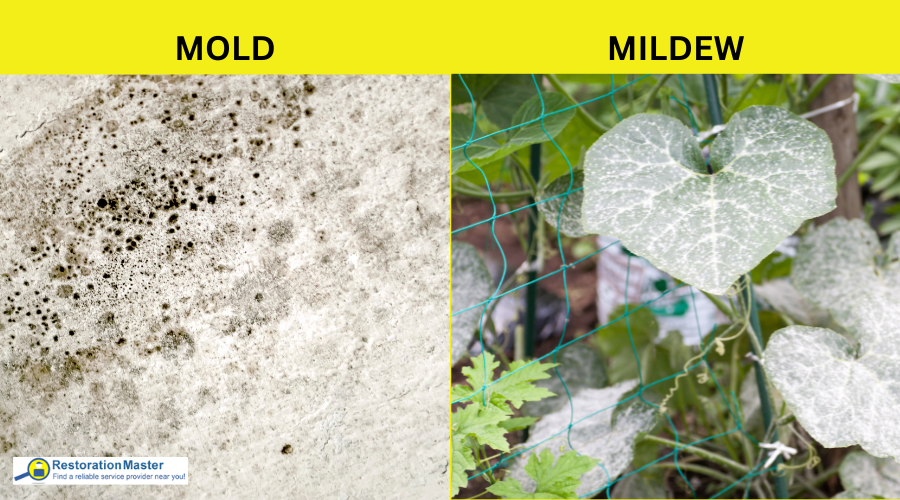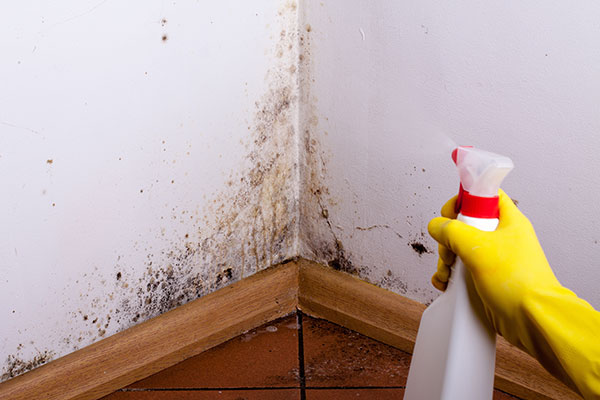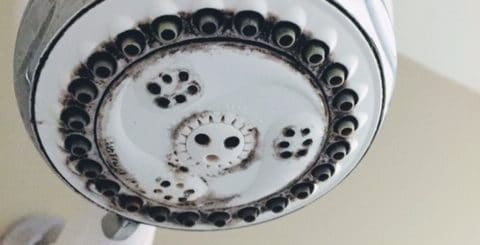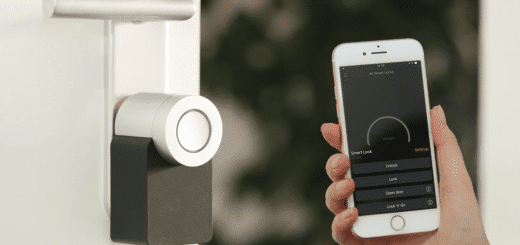Mold vs Mildew: The Main Differences Between Mold and Mildew
MoldMold is a type of fungus that grows in damp or humid conditi... More and mildewMildew is a type of fungus that grows on damp surfaces, typi... More are both types of fungiFungi are a group of organisms, including mold, mildew, and ... More that are commonly found in the home. They thrive in moist environments, spread easily, and live on various surfaces which makes them very difficult to get rid of. If left unattended, however, the harmful microorganisms can quickly affect large areas of your property and may even result in health problems and structural damage. While the two types of fungiFungi are a group of organisms, including mold, mildew, and ... More share many common features, they pose different risks and respond to different treatment.
So, in order to come up with an efficient cleaning strategy and ensure the safety of your living environment, you need to understand the difference between moldMold is a type of fungus that grows in damp or humid conditi... More and mildewMildew is a type of fungus that grows on damp surfaces, typi... More.
Key Takeaways:
- Types of FungiFungi are a group of organisms, including mold, mildew, and ... More: MoldMold is a type of fungus that grows in damp or humid conditi... More and mildewMildew is a type of fungus that grows on damp surfaces, typi... More are fungiFungi are a group of organisms, including mold, mildew, and ... More that thrive in moist environments, potentially causing health issues and structural damage.
- Differences: MoldMold is a type of fungus that grows in damp or humid conditi... More has multiple identical nuclei, grows in black or green patches, penetrates surfaces, and is more harmful. MildewMildew is a type of fungus that grows on damp surfaces, typi... More is a surface fungus, easier to remove, and usually less dangerous.
- Common Types: Powdery and downy mildewMildew is a type of fungus that grows on damp surfaces, typi... More; Alternaria, Aspergillus, Cladosporium, Penicillium, and StachybotrysStachybotrys is a type of black mold (often called “black ... More chartarum (black moldMold is a type of fungus that grows in damp or humid conditi... More) are common molds.
- Identification: MoldMold is a type of fungus that grows in damp or humid conditi... More is typically fuzzy/slimy and various colors; mildewMildew is a type of fungus that grows on damp surfaces, typi... More is flat, white, gray, or yellow.
- Health Effects: MoldMold is a type of fungus that grows in damp or humid conditi... More can cause severe respiratory issues and allergic reactions; mildewMildew is a type of fungus that grows on damp surfaces, typi... More causes milder symptoms.
- PreventionPrevention refers to actions taken to reduce the likelihood ... More and Cleaning: Maintain low humidityHumidity is the amount of moisture or water vapor present in... More, fix leaks, use dehumidifiers, and clean mildewMildew is a type of fungus that grows on damp surfaces, typi... More with vinegar or commercial cleaners. Professional help is recommended for extensive moldMold is a type of fungus that grows in damp or humid conditi... More.

What Is the Difference Between Mold and Mildew?
MoldMold is a type of fungus that grows in damp or humid conditi... More is a fungus that contains multiple identical nuclei and grows in the form of black or green patches which penetrate beneath the surface of the affected material. It reproduces by releasing moldMold is a type of fungus that grows in damp or humid conditi... More sporesSpores are microscopic reproductive units of fungi or mold t... More which is why moldMold is a type of fungus that grows in damp or humid conditi... More growth can spread so easily once it appears in your home. Exposure to the sporesSpores are microscopic reproductive units of fungi or mold t... More can also cause allergic reactions and respiratory issues.
MildewMildew is a type of fungus that grows on damp surfaces, typi... More, on the other hand, is also a type of fungus and considered an early stage of moldMold is a type of fungus that grows in damp or humid conditi... More. It has flat growth that remains on the surface where it can be easily removed. While moldMold is a type of fungus that grows in damp or humid conditi... More usually grows on food or inside permanent structures, such as walls and crawl spaces, mildewMildew is a type of fungus that grows on damp surfaces, typi... More can be found on damp surfaces, paper, fabrics, and various organic materialsOrganic materials are derived from living organisms, such as... More in your home. MildewMildew is a type of fungus that grows on damp surfaces, typi... More is not as dangerous as moldMold is a type of fungus that grows in damp or humid conditi... More, but it can trigger health issues and cause damage to the affected materials.
Common Mildew Types
Primarily, mildewMildew is a type of fungus that grows on damp surfaces, typi... More is a plant disease that causes significant damage to crops and plants, but it can also grow on walls, wallpaper, and wood. Unlike moldMold is a type of fungus that grows in damp or humid conditi... More which appears as irregularly shaped splotches, mildewMildew is a type of fungus that grows on damp surfaces, typi... More grows in a flat pattern. The two main types of mildewMildew is a type of fungus that grows on damp surfaces, typi... More are powdery and downy:
- Powdery mildewMildew is a type of fungus that grows on damp surfaces, typi... More mainly affects flowering plants and first appears as white or gray patterned splotches that gradually become yellowish brown or black as the fungus grows.
- Downy mildewMildew is a type of fungus that grows on damp surfaces, typi... More is commonly found in agricultural products, such as grapes and potatoes. Its appearance varies depending on the type of surface it grows on, but usually downy mildewMildew is a type of fungus that grows on damp surfaces, typi... More starts as yellow spots that eventually turn brown.
Common Mold Types
Although the number of moldMold is a type of fungus that grows in damp or humid conditi... More species that can live indoors exceeds 10,000 according to the latest CDC estimates, most household molds belong to one of the following five types:
- Alternaria grows on walls, in showers, around windows, under sinks, and in various other damp places. It is often found in buildings that have suffered some kind of water damage. Alternaria moldMold is a type of fungus that grows in damp or humid conditi... More can appear black, grey, or dark brown and has a wooly or down-like texture. Prolonged exposure to this kind of fungiFungi are a group of organisms, including mold, mildew, and ... More can cause allergic reactions and asthma attacks.

Toxic black moldMold is a type of fungus that grows in damp or humid conditi... More is the most harmful kind of household moldMold is a type of fungus that grows in damp or humid conditi... More.
- Aspergillus is the most common type of moldMold is a type of fungus that grows in damp or humid conditi... More found indoors. It can look grey, brown, yellow, green, white, or black. Aspergillus moldMold is a type of fungus that grows in damp or humid conditi... More usually grows on walls, insulationInsulation is a material used in buildings to reduce the tra... More, paper products, and clothing. It can cause allergic reactions and respiratory infections, as well as inflammation of the lungs in people with weak immune systems.
- Unlike many other molds, Cladosporium can grow in cool areas. It usually appears on fabrics, such as carpets or curtains, and on wood surfaces, like cabinets and floorboards. It has a characteristic black or olive-green color and can cause a variety of respiratory problems.
- Penicillium can be found on various materials that have been in contact with water, including carpeting, wallpaper, insulationInsulation is a material used in buildings to reduce the tra... More, and mattresses. It looks blue or green and produces strong musty odors. Penicillium sporesSpores are microscopic reproductive units of fungi or mold t... More spread very easily and often result in allergic reactions.
- StachybotrysStachybotrys is a type of black mold (often called “black ... More chartarum, often referred to as “black moldMold is a type of fungus that grows in damp or humid conditi... More” because of its color, is the most dangerous kind of household moldMold is a type of fungus that grows in damp or humid conditi... More – it produces toxic compounds called mycotoxinsMycotoxins are toxic substances produced by certain types of... More that can cause severe health problems, such as allergic symptoms, breathing problems, asthma attacks, chronic sinus infections, fatigue, and depression. The toxic black moldMold is a type of fungus that grows in damp or humid conditi... More has a characteristic musty odorAn odor is a smell, often detectable by the human nose, whic... More and usually grows in areas that are constantly damp – around leaky pipes, inside air conditioning ducts where there is a lot of condensation, etc.
How to Tell the Difference Between Mold and Mildew?
There are several crucial differences in the appearance and properties of moldMold is a type of fungus that grows in damp or humid conditi... More and mildewMildew is a type of fungus that grows on damp surfaces, typi... More that will help you recognize the type of indoor fungiFungi are a group of organisms, including mold, mildew, and ... More you have discovered in your home:
Differences Between Mold and Mildew in Appearance
Typically, moldMold is a type of fungus that grows in damp or humid conditi... More appears black or green while mildewMildew is a type of fungus that grows on damp surfaces, typi... More looks gray or white. Yet, there are some more detailed specifics in the appearance of the fungiFungi are a group of organisms, including mold, mildew, and ... More:
- MildewMildew is a type of fungus that grows on damp surfaces, typi... More usually grows in a flat pattern and appears either powdery or fluffy. It can be easily identified as a patch of white, gray, or yellowish fungus that is lying on the surface of a moist area. MildewMildew is a type of fungus that grows on damp surfaces, typi... More usually turns black or brown over time;
- MoldMold is a type of fungus that grows in damp or humid conditi... More is usually fuzzy or slimy in appearance. It appears as irregularly shaped spots that can have different colors – blue, green, yellow, brown, gray, black, or white. Oftentimes, surfaces that are covered in moldMold is a type of fungus that grows in damp or humid conditi... More begin to rot.

Differences in the Effects of Mold and Mildew
Both moldMold is a type of fungus that grows in damp or humid conditi... More and mildewMildew is a type of fungus that grows on damp surfaces, typi... More need to be taken care of in a quick and efficient manner as they can cause property damage and health issues over time:
- MildewMildew is a type of fungus that grows on damp surfaces, typi... More usually affects plants and crops but can appear in moist areas of your home on walls, wallpaper, and wood. MildewMildew is a type of fungus that grows on damp surfaces, typi... More can cause damage to affected surfaces and materials, but it is not as damaging as moldMold is a type of fungus that grows in damp or humid conditi... More. If it develops indoors, it can also pose health risks. When inhaled, mildewMildew is a type of fungus that grows on damp surfaces, typi... More sporesSpores are microscopic reproductive units of fungi or mold t... More cause coughing, headache, sore throat, and respiratory problems, but these issues are often less severe than those caused by moldMold is a type of fungus that grows in damp or humid conditi... More.
- MoldMold is a type of fungus that grows in damp or humid conditi... More can result in considerable structural damage when left unattended for a long time. Prolonged exposure can cause a variety of health problems, depending on the strain of moldMold is a type of fungus that grows in damp or humid conditi... More. Common health effects of mold include various allergic reactions (sneezing, skin irritation, irritation of the eyes and throat, nasal congestion, etc.), respiratory problems (difficulty breathing, coughing, pneumonia, asthma attacks), heart problems, migraines, inflammation and pain in the joints, dizziness, depression, and extreme fatigue. The mycotoxinsMycotoxins are toxic substances produced by certain types of... More produced by black moldMold is a type of fungus that grows in damp or humid conditi... More are particularly harmful and may have severe long-term health effects, especially in younger kids, seniors, and individuals with weak immune systems.
Mold and Mildew Testing
If you are not sure what type of fungiFungi are a group of organisms, including mold, mildew, and ... More you are dealing with, you can call a professional to have them tested:
- Home testing – The easiest way to identify whether you have moldMold is a type of fungus that grows in damp or humid conditi... More or mildewMildew is a type of fungus that grows on damp surfaces, typi... More in your home is to drip a few drops of household bleach on the affected area. Wait for about five minutes and inspect the spot:
– If it has become lighter, you are dealing with mildewMildew is a type of fungus that grows on damp surfaces, typi... More;
– If it remains dark, it is moldMold is a type of fungus that grows in damp or humid conditi... More that has developed in your home.
- Professional testing – If you suspect considerable moldMold is a type of fungus that grows in damp or humid conditi... More growth in your property or if you aren’t sure about the best course of action to take, your best bet is to ask for professional assistance. Contact a trustworthy moldMold is a type of fungus that grows in damp or humid conditi... More removal company in your area for inspectionInspection is the careful examination and assessment of a pr... More, testing, evaluation, and efficient mold removal services that will help you get rid of the harmful fungiFungi are a group of organisms, including mold, mildew, and ... More in your home.
How to Get Rid of Mold and Mildew?
MoldMold is a type of fungus that grows in damp or humid conditi... More and mildewMildew is a type of fungus that grows on damp surfaces, typi... More form under specific conditions, including the presence of water or moisture and organic food sources. If you can prevent moldMold is a type of fungus that grows in damp or humid conditi... More and mildewMildew is a type of fungus that grows on damp surfaces, typi... More from appearing in your home in the first place, you’ll save yourself a lot of hassle and headaches.
How to Prevent Mold and Mildew
The most efficient way to prevent moldMold is a type of fungus that grows in damp or humid conditi... More and mildewMildew is a type of fungus that grows on damp surfaces, typi... More in your home is to keep all the areas dry and moisture-free. Maintain a humidityHumidity is the amount of moisture or water vapor present in... More level of about 30-50% inside the house (a dehumidifierA dehumidifier is a device that removes excess moisture from... More provides the most advantageous solutionA solution is a homogeneous mixture of two or more substance... More for ensuring appropriate indoor humidity), have your heating and cooling systems regularly inspected, keep air ducts clean and in good condition, ensure good air circulation inside the premises, and fix any leaks in the bathroom, kitchen, or other areas. Remove any mildew-affected plants and weeds as soon as you notice them in order to prevent a mildewMildew is a type of fungus that grows on damp surfaces, typi... More infestation.
How to Clean Mold and Mildew

MoldMold is a type of fungus that grows in damp or humid conditi... More removal is better left to the experts.
MildewMildew is a type of fungus that grows on damp surfaces, typi... More is a surface fungus that can be efficiently treated with a commercially available cleaner, or a solutionA solution is a homogeneous mixture of two or more substance... More of vinegar and water, and a scrubbing brush. Just make sure you work in a well-ventilated area and wear a facial mask to prevent inhaling mildewMildew is a type of fungus that grows on damp surfaces, typi... More sporesSpores are microscopic reproductive units of fungi or mold t... More, as well as to avoid breathing in fumes given off by the cleaning product you use. It is also advisable to put on rubber gloves in order to protect your hands both from the mildewMildew is a type of fungus that grows on damp surfaces, typi... More and from the cleaning agent. Clean all the surrounding areas carefully as well, to ensure that all the fungiFungi are a group of organisms, including mold, mildew, and ... More have been successfully removed.
MoldMold is a type of fungus that grows in damp or humid conditi... More, on the other hand, attaches to the affected materials with microscopic filaments that penetrate beneath the surface. The moldMold is a type of fungus that grows in damp or humid conditi... More sporesSpores are microscopic reproductive units of fungi or mold t... More spread very easily and can survive in extreme conditions, so they can quickly affect large areas of your property and result in permanent damage. Moreover, despite its characteristic musty smell, moldMold is a type of fungus that grows in damp or humid conditi... More is only visible to the eye when the colonies start growing, so early detection and preventionPrevention refers to actions taken to reduce the likelihood ... More is very difficult. Worst of all, moldMold is a type of fungus that grows in damp or humid conditi... More can have a very negative impact on your health, so DIY removal attempts are not recommendable if it covers a large area or appears in areas that are very difficult to access and treat.
Taking the following steps can help you remove mold and mildew:
- Remove materials that have been damaged such as fabrics, wallpaper, wood, and drywall. These materials must be carefully placed in garbage bags and immediately sealed to prevent the spread of sporesSpores are microscopic reproductive units of fungi or mold t... More.
- Spray mildewMildew is a type of fungus that grows on damp surfaces, typi... More and dry moldMold is a type of fungus that grows in damp or humid conditi... More with clean water to help prevent the sporesSpores are microscopic reproductive units of fungi or mold t... More from spreading.
- Use either a solutionA solution is a homogeneous mixture of two or more substance... More of mild soap and water or a solutionA solution is a homogeneous mixture of two or more substance... More of vinegar and water and spray the affected areas.
- Use a brush or spongeA sponge is a porous material used to absorb liquids or clea... More to remove the moldMold is a type of fungus that grows in damp or humid conditi... More or mildewMildew is a type of fungus that grows on damp surfaces, typi... More. Make sure to change the solutionA solution is a homogeneous mixture of two or more substance... More and sponges often to avoid redepositing moldMold is a type of fungus that grows in damp or humid conditi... More or mildewMildew is a type of fungus that grows on damp surfaces, typi... More sporesSpores are microscopic reproductive units of fungi or mold t... More.
- Give the area at least 48 hours to dry. If you did not remove all of the moldMold is a type of fungus that grows in damp or humid conditi... More or mildewMildew is a type of fungus that grows on damp surfaces, typi... More, you can either repeat the process or call a mold remediationMold remediation is the process of identifying, removing, an... More professional.
SEE ALSO: Important Reasons to Have a Professional Remove Mold from Your Home
Professional Mold Removal
The safest and most efficient way to get rid of a moldMold is a type of fungus that grows in damp or humid conditi... More problem is to call a mold remediation company. An experienced professional will come to your home to assess the situation and determine the type of moldMold is a type of fungus that grows in damp or humid conditi... More or mildewMildew is a type of fungus that grows on damp surfaces, typi... More in your property, as well as the extent of the damage. Then, the most appropriate actions will be taken to remove the harmful fungiFungi are a group of organisms, including mold, mildew, and ... More and prevent its appearance in the near future. The experts will help ensure not only the safety of your living environment, but also your peace of mind.












